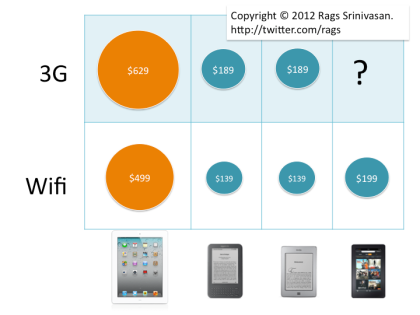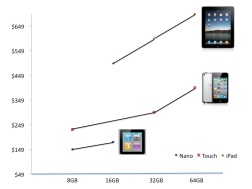In the startup parlance MVP refers to Minimal Viable Product.
“The minimum viable product is that version of a new product which allows a team to collect the maximum amount of validated learning about customers with the least effort.“
In this explanation there is no mention of which customers and what is customer value. It is inward focused definition. Since it does not talk about customers or value it does not talk about pricing. Some variations of the explanations have included pricing component to MVP.
However measuring customer value or charging for the value delivered is not the primary concern in defining or building a Minimum Viable Product.
I would like to take this concept and flip it on its head and show you what Apple builds.
When Apple builds its products it is packed with only those features that are valued by its customers and it can charge for it. It may look the opposite when you consider the fact that they were the first to introduce all inclusive iMac and MacBooks. But had they thought they would not have been able to extract a price premium for those included features they would not have included them, I will come to that in a minute.
Sure they could have built product versions that lacked some of those features and competed with other low-end products. As Steve Jobs would have said, “if we knew how to make it inexpensive without making the product crap, we would have done it”. Apple chose to go after those higher willingness to pay customers and added product features that extracted more value in the form of higher prices than the cost to add those features.
See below how they extracted value from flash drive capacity and 3G in iPad.

On the flip side see what they chose not to add.
Even when you pay $829 for iPad you will not get ear-phones with it while you get them with measly $49 iPod.
You can ask all you want for a Retina display MacBook Air but until they figure out a way to extract price premium for it you won’t see one.
What Apple is doing is starting with the customer segment they want to target (they don’t have to get the iMac in billions homes) understand what these customers value and willing to pay a premium for, and deliver them just that at a premium price.
As opposed to a Minimum Viable Product, Apple builds and delivers Maximally Valued Product. Here is my academic sounding definition for it
A Maximally Valued Product for a given customer segment is the product version that adds most value to the customers while enabling marketer to extract their share of the value as price premium.
Note the segment specificity, value creation and value capture aspects of the definition unlike the definition of Minimum Viable Product.
The Maximally Valued Product packs features for sure but these are the features customers value and willing to pay for. It also lacks many features, sure customers may value them but if that does not flow into better prices, why bother?
Which MVP do you build?


There are indeed analytical methods to find out what customers value and by how much http://www.slideshare.net/ragsvasan/a-simple-tutorial-on-conjoint-and-cluster-analysis
LikeLike
In situations of extreme uncertainty, the first. How do you learn which product features customers are willing to pay a premium for? (By doing the first, you’ll get to the latter with less waste.)
LikeLike
“It also lacks many features, sure customers may value them but if that does not flow into better prices, why bother?” <- Brilliant.
Am sure you did not intend it, but this post reads as if Apple makes its feature decisions purely based on customer's ability to pay a premium for it. Did I get that right?
Which MVP? The latter surely! Ah well, we hope to be there soon!
LikeLike